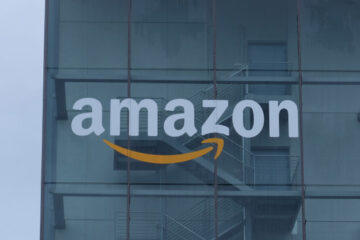When inflation spiked in 2022, prices skyrocketed and have yet to come down three years later. The added cost of necessities like housing, groceries, and clothing has put a financial strain on many U.S. households, making the cost of living one of the top financial concerns.
As the fallout from escalating trade war tensions and tariffs is fully reflected in consumer prices, Americans may find that they need help bridging the gap between their income and rising expenses.
🏦 🏡 Don’t miss the move: SIGN UP for TheStreet’s FREE daily newsletter 🏦 🏡
Household debt levels have been rising for years, and a new form of consumer credit — Buy Now, Pay Later (BNPL) — has gained popularity.
A growing number of consumers are using BNPL to cover purchases ranging from groceries to clothing to concerts as a way to keep up with rising prices.
However, users may not be aware of the fine print when making a payment with installment loans.
Over the past several years, inflation has significantly raised the prices of food, housing, and healthcare, making it difficult for many Americans to make ends meet.
Image source: Getty Images
Americans are relying on BNPL services to cover the rising price of essentials like groceries
Though inflation has cooled considerably from its peak of 9.1% in 2022, prices have continued to rise, forcing consumers to budget for soaring costs on the same income level. Inflation has impacted grocery and housing the most, with many Americans spending over 30% of their salary on housing costs alone.
However, groceries have begun to eat up a significant portion of household budgets, and will likely continue as trade war uncertainty will undoubtedly raise prices of meat, dairy, fresh fruit, and coffee over the next few months.
Almost two-thirds of Americans struggle to afford groceries, and the average four-person family spends $1,369 per month on a moderate grocery budget.
Grocery prices increased 51% between 2013 and 2023 and are on track to jump even further over the next few years.
More on credit cards:
Chase revokes a major privilege customers love in ‘calculated’ moveHow much credit card debt does Americans have on average Dave Ramsey shares important advice about your credit card
Households are turning to credit cards and payment alternatives like BNPL to supplement their budgets as they struggle with increased expenses.
One-quarter of Americans use BNPL to cover groceries, up from 14% just a year ago. However, nearly two-thirds of BNPL users note they have been late on a loan payment, which could have significant consequences down the line.
Young consumers use BNPL to pay for entertainment, but it may damage their credit scores
Though they offer convenience, BNPL loans can quickly snowball, as they are unregulated and often target financially vulnerable and younger consumers.
Late BNPL loans can impact a borrower’s credit score if the loan goes into default, a detail younger consumers typically aren’t aware of. Predatory lending practices often help consumers bridge their finances temporarily, but typically put them further in debt.
Related: Credit cards are about to get more expensive
Still, Gen Z and millennial consumers are avid BNPL users, relying on installment loans to pay for experiences like concerts and vacations. A staggering 60% of Coachella attendees used BNPL plans to purchase weekend passes, and many also added lodging and food expenses to their tab as well.
However, many users aren’t aware of the long-term implications of BNPL loans. Contrary to what 62% believe, timely repayment of the loans will not improve one’s credit score. BNPL services aren’t regulated or reported to credit bureaus. However, defaulted BNPL loans are often reported to credit bureaus, and multiple defaulted loans can bring down a borrower’s credit score.
TransUnion, Experian, and Equifax recently announced plans to include BNPL in credit reports, meaning that late payments and defaulted BNPL loans will soon directly impact credit scores, for better or worse.
Related: Veteran fund manager unveils eye-popping S&P 500 forecast


